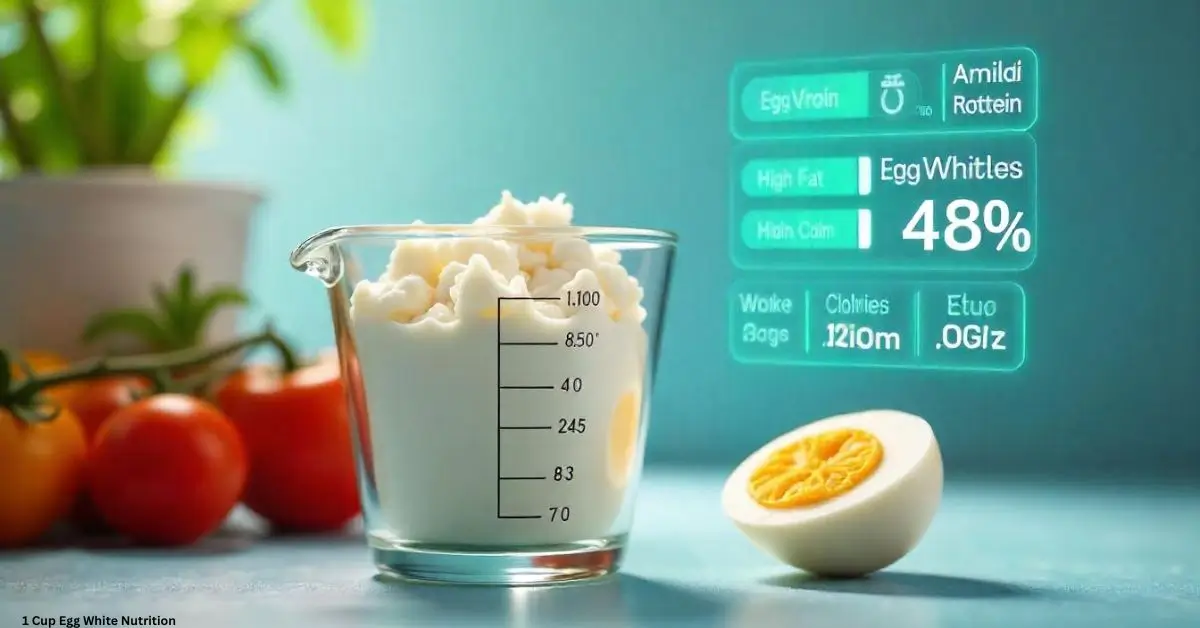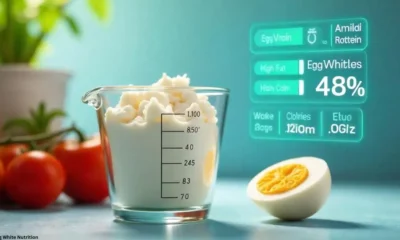HEALTHY DIET
Diabetic Chocolate: Guilt-Free Indulgence for Sweet Cravings

Diabetic chocolate has emerged as a delicious and responsible choice for people aiming to manage blood sugar while still enjoying a treat. With the global rise in diabetes and health awareness, more consumers are turning to alternatives that taste great without the risks of high sugar content. These specialized confections are made using low-glycemic sweeteners and wholesome ingredients, making them a suitable option for those with glucose intolerance, as well as anyone following low-carb or ketogenic diets.
This article explores the advantages, varieties, ingredients, and comparisons that set these sugar-free options apart, all while providing helpful tips for making smarter dessert choices.
Why Traditional Chocolate Isn’t Always Ideal
Regular chocolate is typically made with refined sugar and other ingredients that can cause significant spikes in blood sugar. For people with diabetes or insulin resistance, this can be risky. Even for non-diabetics, consistent consumption of high-sugar products contributes to weight gain, inflammation, and an increased risk of chronic illnesses.
In contrast, sweets developed for glucose control contain ingredients that have little to no effect on blood sugar levels. These treats offer the richness of cocoa without the side effects that come from processed sugars.
What Makes Diabetic-Friendly Chocolate Special?
This category of confectionery is crafted specifically to support stable energy levels. While the flavor and texture mimic traditional chocolate, the underlying ingredients are what make it unique. Here are a few key features:
- Sugar Alternatives: These products often use erythritol, stevia, monk fruit, or xylitol instead of refined sugar.
- Low Net Carbs: Perfect for keto or low-carb diets, they offer indulgence without interrupting metabolism.
- High Cocoa Content: Often 70% or higher, leading to better antioxidant levels and a richer flavor.
- Minimal Glycemic Impact: Designed to help prevent post-snack glucose spikes.
Who Can Benefit From Diabetic Chocolates?
Although originally designed with diabetic patients in mind, this type of chocolate is now enjoyed by a much wider group:
- People with pre-diabetes
- Those on low-carb or ketogenic diets
- Athletes who avoid sugar for performance
- Children needing safe dessert options
- Anyone wanting a sweet treat with fewer consequences
Common Ingredients Used
Understanding what goes into these sweets helps consumers make informed decisions. Some of the most common ingredients found in low-sugar chocolate include:
- Stevia: A natural, zero-calorie sweetener from the stevia plant.
- Erythritol: A sugar alcohol with a clean taste and minimal gastrointestinal effects when consumed in moderation.
- Cocoa Butter: Adds creaminess and richness.
- Inulin: A type of fiber that provides sweetness and digestive benefits.
- Maltitol: Offers a sweetness profile similar to sugar but with fewer calories.
These ingredients aim to provide the sensory enjoyment of a classic chocolate bar without compromising health goals.
Comparison: Diabetic vs. Regular Chocolate
| Feature | Diabetic Chocolate | Regular Chocolate |
| Sweeteners | Stevia, erythritol, monk fruit | Cane sugar, glucose syrup |
| Glycemic Index | Low | High |
| Cocoa Content | Often higher (70%+) | Varies (30–60%) |
| Blood Sugar Impact | Minimal | Significant |
| Calories | Typically fewer | Higher due to added sugars |
| Keto/Low-Carb Friendly | Yes | Rarely |
Popular Types of Low-Sugar Chocolate
There’s no shortage of variety when it comes to these sweet alternatives. Common forms include:
- Dark Chocolate Bars: Rich and satisfying with minimal sugar.
- Milk Chocolate Substitutes: Made using plant-based or low-carb dairy alternatives.
- Chocolate Chips: Perfect for low-sugar baking recipes.
- Nut-Filled Options: Almonds, hazelnuts, and peanuts for added texture and protein.
- Truffles and Filled Candies: Flavored or cream-filled choices for special occasions.
These choices are widely available online and in health food stores.
Tips for Choosing Quality Options
Not all sugar-free products are created equal. Here are some helpful tips for selecting the best ones:
- Check Ingredient Labels: Ensure sweeteners are natural or low-GI.
- Monitor Serving Size: Some may still contain digestible carbs in larger portions.
- Watch for Artificial Additives: Avoid products with unnecessary fillers or hydrogenated oils.
- Look for Certifications: Organic, non-GMO, or fair-trade labels ensure better quality and ethical sourcing.
Advantages Beyond Sugar Control
Rich in Antioxidants
Chocolates high in cocoa provide flavonoids and polyphenols—compounds that promote heart health and reduce oxidative stress.
Mood-Boosting Benefits
Theobromine and small amounts of caffeine in cocoa can elevate mood and boost alertness naturally.
Supports Weight Management
Since these chocolates have fewer calories and sugar, they help prevent the overeating triggers that often follow blood sugar crashes.
Dental Health Friendlier
With no sucrose, there’s a reduced risk of cavities when consumed in moderation.
Integrating It Into Your Diet
Here are some practical ways to include these treats in your meal plan:
- Post-Meal Dessert: A small piece satisfies cravings without affecting insulin levels.
- Trail Mix Addition: Combine with nuts and seeds for an energizing, blood sugar-stable snack.
- Low-Carb Baking: Use chips or shavings in cookies, brownies, or fat bombs.
- Smoothie Enhancer: Blend cocoa or chocolate powder with almond milk and protein for a sweet drink.
A Word on Sugar Alcohols
While sugar alcohols are commonly used and safe, they may cause mild gastrointestinal discomfort in sensitive individuals. It’s best to start with small quantities and increase slowly. Drinking plenty of water also helps reduce any side effects.
Diabetic Chocolate and the Keto Lifestyle
Many low-carb eaters rely on these treats as a staple. With minimal net carbs and high fat content, certain brands align perfectly with ketogenic principles. Just be cautious of maltitol, which has a slightly higher glycemic index than other sugar alcohols.
Myths and Misconceptions
- “It’s flavorless.” Modern sugar-free chocolates rival or even surpass traditional ones in taste.
- “It’s only for diabetics.” Anyone avoiding sugar can benefit.
- “It’s synthetic.” Many versions use plant-based, organic ingredients.
- “You can eat as much as you want.” Portion control remains essential to avoid overconsumption of sugar substitutes.
Future Trends in Sugar-Free Sweets
The industry is growing fast. Innovations we’re beginning to see include:
- Probiotic-Infused Chocolates
- Custom nutrition based on DNA
- Zero-waste packaging
- Natural, superfood-infused options
- AI-driven taste enhancements for natural sweeteners
As awareness grows, so does the demand for sophisticated, health-conscious indulgences.
Conclusion
Diabetic chocolate offers a way to enjoy sweets while supporting healthy blood sugar levels. Whether you’re managing diabetes, eating low-carb, or simply looking to avoid refined sugars, these treats deliver all the flavor with none of the regret. From antioxidant-rich bars to decadent truffles, sugar-free chocolates are transforming the way we indulge. They’re a perfect example of how science and culinary art can work together to support better living. By integrating these healthier options into your life, you can satisfy cravings, maintain balance, and still enjoy every bite.
FAQs
Is sugar-free chocolate safe for daily consumption?
Yes, if consumed in moderation. Start with small portions to gauge your body’s response.
Can I use diabetic chocolate for baking?
Absolutely. Many brands offer chips and bars perfect for low-sugar recipes.
Does diabetic chocolate taste like regular chocolate?
Most modern versions closely mimic or even improve on the taste of traditional chocolates.
Are there any side effects of diabetic chocolate?
Some sugar alcohols may cause gas or bloating, but these effects are mild and usually temporary.
Can children eat diabetic chocolates safely?
Yes, especially for those managing sugar intake. Just ensure the ingredients are age-appropriate.
Is it okay to eat on a keto diet?
Definitely. Most varieties are low in carbs and high in healthy fats, fitting ketogenic guidelines
HEALTHY DIET
1 Cup Egg White Nutrition: Protein Powerhouse for Optimal Health

When it comes to clean eating, muscle building, and managing your daily intake, 1 cup egg white nutrition delivers a near-perfect balance of high protein with almost zero fat. Egg whites have gained a reputation as a dietary superstar, especially among athletes, fitness enthusiasts, and those on weight-loss journeys. Their nutrient-rich yet low-calorie composition makes them a preferred option for meals, snacks, and cooking alternatives.
This guide explores everything you need to know about 1 cup egg white nutrition, from its macronutrient profile and health benefits to how it compares with other protein-rich foods. It also provides usage tips, storage guidance, and frequently asked questions, making it the go-to reference for anyone looking to enhance their diet with this simple yet powerful food.
What Are Egg Whites?
An egg white, or albumen, is the clear, viscous substance that surrounds the yolk in an egg. Composed primarily of water and proteins, egg whites are naturally low in calories, cholesterol-free, and almost devoid of fat. Unlike the yolk, which contains most of the egg’s vitamins and fats, the white offers lean protein, making it ideal for those focusing on body composition and dietary health.
1 cup egg white nutrition is often highlighted for its complete amino acid profile. This means it contains all nine essential amino acids that the body needs but cannot produce on its own—making it a complete and efficient protein source.
Detailed Macronutrient Profile of 1 Cup Egg White
Understanding what’s in 1 cup egg white nutrition helps you see why this ingredient is so valued in health-focused diets.
Macronutrient Composition (Per 1 Cup / Approx. 243 grams):
| Nutrient | Amount | Benefits |
| Calories | 126 | Supports energy with minimal intake |
| Protein | 26.5g | Builds lean muscle, essential for repair and growth |
| Total Fat | 0.4g | Very low-fat option |
| Carbohydrates | 1.8g | Minimal impact on blood glucose |
| Sugar | 1.3g | Natural sugars, no added sugar |
| Fiber | 0g | Not a fiber source |
| Cholesterol | 0mg | Ideal for heart health and cholesterol management |
| Sodium | 403mg | Helps with fluid balance, exercise recovery |
| Potassium | 404mg | Supports muscles and cardiovascular function |
| Calcium | 13.2mg | Aids in nerve and bone support |
| Magnesium | 21.9mg | Essential for enzymatic reactions |
This nutrient-rich profile makes 1 cup egg white nutrition highly effective for muscle gain, weight control, and metabolic enhancement without unwanted fats or cholesterol.
The Benefits of 1 Cup Egg White Nutrition for Weight Management
The high protein-to-calorie ratio in egg whites promotes satiety, or the feeling of fullness. By incorporating 1 cup egg white nutrition into meals—especially breakfast—you can significantly reduce your appetite and total daily calorie intake. This leads to more effective weight loss or maintenance without feeling starved.
Additionally, the body requires more energy to digest protein compared to carbohydrates or fats, creating a thermogenic effect. This metabolic boost helps burn calories more efficiently, supporting fat loss while maintaining lean muscle mass.
Supporting Muscle Growth and Physical Recovery
For bodybuilders, athletes, and physically active individuals, 1 cup egg white nutrition offers the amino acids required to build and repair muscle fibers after workouts. With more than 26 grams of protein per cup, egg whites are a natural alternative to protein powders.
Egg whites are rapidly absorbed by the body, making them an excellent post-workout recovery meal. Their biological value (BV), which measures how efficiently the body uses a protein source, is impressively high—just shy of whey protein.
The inclusion of branched-chain amino acids (BCAAs) like leucine, isoleucine, and valine in egg whites further supports muscle protein synthesis and reduces exercise-induced fatigue.
A Nutritional Comparison: Egg Whites vs. Other Protein Sources
| Food Item | Calories | Protein | Fat | Carbs | Cholesterol |
| Egg Whites (1 cup) | 126 | 26.5g | 0.4g | 1.8g | 0mg |
| Chicken Breast (100g) | 165 | 31g | 3.6g | 0g | 85mg |
| Tuna (canned) | 179 | 39g | 1.3g | 0g | 47mg |
| Greek Yogurt (200g) | 150 | 15g | 5g | 6g | 10mg |
| Tofu (Firm, 100g) | 190 | 20g | 11g | 4g | 0mg |
| Lentils (1 cup cooked) | 230 | 18g | 1g | 40g | 0mg |
As illustrated, 1 cup egg white nutrition provides a superior protein yield with minimal fat, sodium, and calories, making it a perfect choice for lean muscle development and overall wellness.
Key Health Advantages of Including Egg Whites in Your Diet
Heart-Healthy Option
With no cholesterol and less than half a gram of fat, egg whites support heart health and are frequently recommended by cardiologists. People managing cardiovascular risks benefit from swapping whole eggs for egg whites.
Ideal for Diabetic Diets
Egg whites have a very low glycemic index and provide protein without affecting blood glucose levels. Their high-protein, low-carb profile aligns well with diabetic dietary guidelines.
Promotes Healthy Skin and Hair
The amino acids in egg whites, particularly proline and glycine, support collagen production, which is vital for skin elasticity and hair strength.
Boosts Immune Function
Egg whites contain albumin and lysozyme, which have antimicrobial properties. These compounds help reinforce your immune system naturally.
Supports Pregnancy Nutrition
Due to their high-quality protein and absence of cholesterol, 1 cup egg white nutrition can safely be included in the diets of pregnant women to support fetal development.
Culinary Flexibility of Egg Whites
Egg whites are versatile, mild in flavor, and easy to prepare. Whether you’re eating clean or experimenting with high-protein recipes, egg whites adapt seamlessly.
Popular ways to include 1 cup egg white nutrition into meals:
- Egg white omelets with spinach, peppers, and onions
- Baked protein pancakes or muffins
- Egg white breakfast wraps
- Meringues and protein desserts
- Smoothies with pasteurized egg whites for added protein
For vegetarians who consume eggs, egg whites provide an ideal bridge between plant-based and animal-based nutrition.
Common Misconceptions About Egg Whites
Egg Whites Lack Nutrients
While the yolk does contain vitamins A, D, E, and K, the claim that egg whites are “empty” is incorrect. They are rich in high-quality protein, magnesium, potassium, and enzymes essential for bodily functions.
Raw Egg Whites Are Better
Consuming raw egg whites may pose a risk of foodborne illness (salmonella) and can inhibit biotin absorption due to avidin. Cooking deactivates this enzyme, making cooked egg whites both safer and nutritionally effective.
Are There Any Risks to Eating Egg Whites?
While 1 cup egg white nutrition is safe and beneficial for most people, there are a few exceptions:
- Egg Allergy: Individuals allergic to eggs should avoid egg whites entirely.
- Biotin Deficiency (with raw egg consumption): Eating raw egg whites long-term can lead to biotin deficiency due to the avidin content.
- High Sodium Levels: Though modest, individuals on sodium-restricted diets should monitor intake, especially with commercially packed liquid egg whites.
How to Store and Prepare Egg Whites
Proper handling extends the freshness and safety of egg whites. Here are some tips:
- Refrigeration: Store egg whites in an airtight container and use within 2–4 days.
- Freezing: You can freeze egg whites in ice cube trays for extended storage.
- Pasteurized Options: Liquid egg whites in cartons are safe and convenient for shakes and no-cook recipes.
Always cook to 160°F (71°C) to eliminate pathogens.
Conclusion
Beginning your fitness or health journey with 1 cup egg white nutrition gives you a clean, high-protein foundation. It is cholesterol-free, low in fat, high in amino acids, and an easy addition to almost any meal.
From weight loss to muscle building, from controlling diabetes to improving skin health, the benefits of incorporating egg whites into your diet are impressive. Their affordability and availability further add to their value in a nutritious, balanced eating plan.
FAQs
How much protein is in 1 cup of egg whites?
There are approximately 26.5 grams of protein in one cup of egg whites, making them an excellent source of lean protein.
Can I use 1 cup of egg whites daily?
Yes, you can safely include one cup of egg whites daily, especially if you’re aiming for high protein and low-fat intake.
Are egg whites good for cholesterol control?
Yes, egg whites contain zero cholesterol and are ideal for heart-friendly diets.
Do egg whites help build muscle?
Absolutely. Egg whites are rich in complete proteins and amino acids that promote muscle growth and recovery.
Are liquid egg whites the same as fresh?
Pasteurized liquid egg whites offer the same nutritional benefits and added safety for no-cook uses like smoothies.
Can I eat egg whites if I have high blood pressure?
Yes, but choose low-sodium or fresh options to manage overall sodium intake.
Read more:
-

 GENERAL5 days ago
GENERAL5 days agoGary Brecka Supplements: Unlocking Peak Human Performance
-

 HEALTHY DIET5 days ago
HEALTHY DIET5 days ago1 Cup Egg White Nutrition: Protein Powerhouse for Optimal Health
-

 WORKOUTS5 days ago
WORKOUTS5 days agoButt Exercise Machine: Intelligent Exercises to Change Your Glutes
-

 WORKOUTS5 days ago
WORKOUTS5 days agoDas Labs Pre Workout: The Ultimate Energy Boost for Athletes
-

 HEART TIPS4 days ago
HEART TIPS4 days agoTheralogix NeoQ10 Coenzyme Q10 Supplement – Heart Health
-

 WORKOUTS3 days ago
WORKOUTS3 days agoCable Chest Workout: Sculpt Your Pecs with Precision
-

 BP & SUGAR5 days ago
BP & SUGAR5 days agoDiabetic Pedicure Near Me: Where Health Meets Comfort
-

 GENERAL4 days ago
GENERAL4 days agoConversationsWithRina Relationships and Healthy Living
